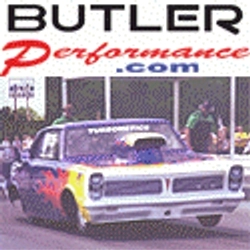Hemmings: Low-mileage 428 H.O.-powered 1967 Pontiac Catalina 2+2
Paul Alexander's 1967 Pontiac Catalina 2+2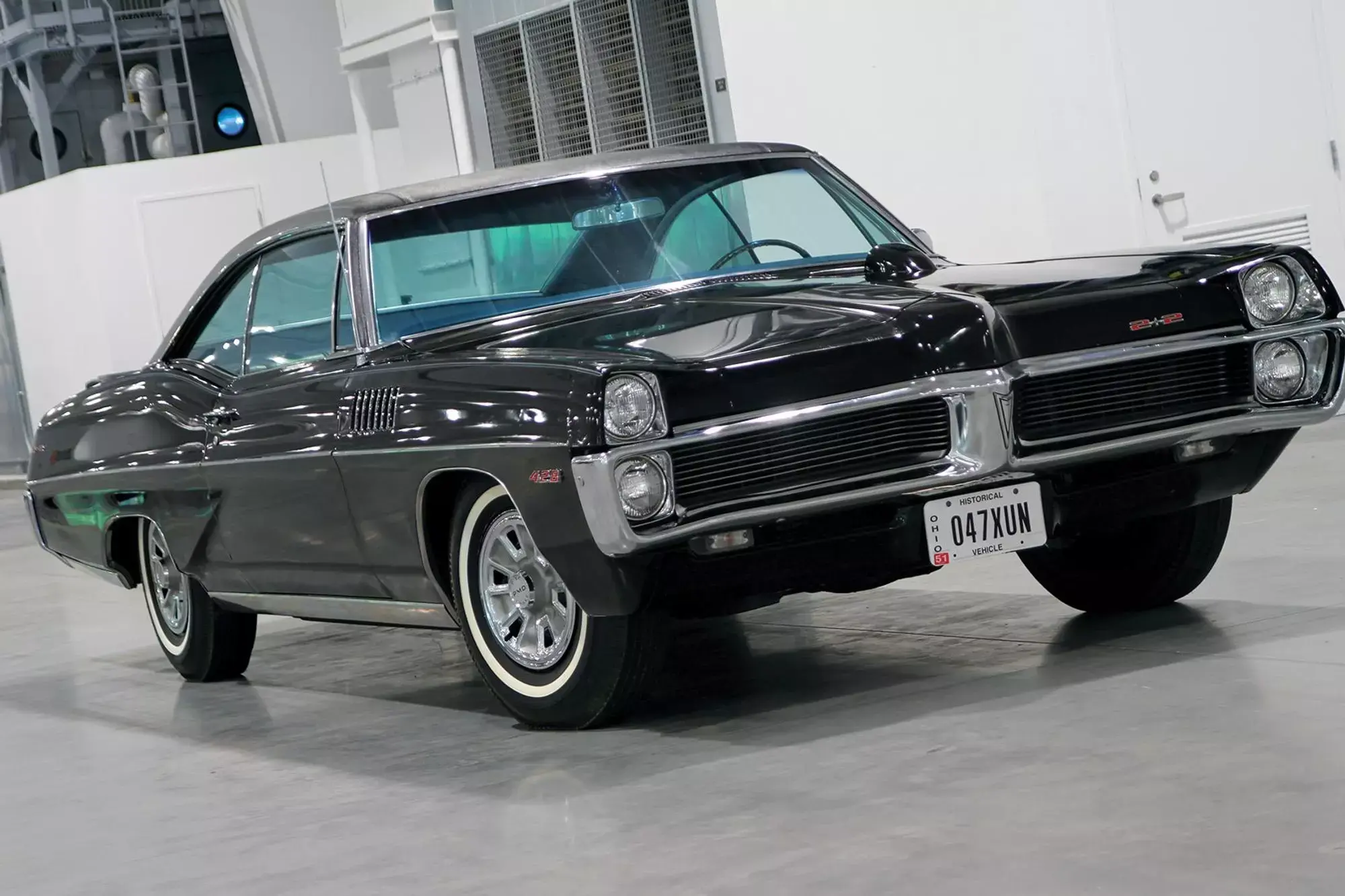
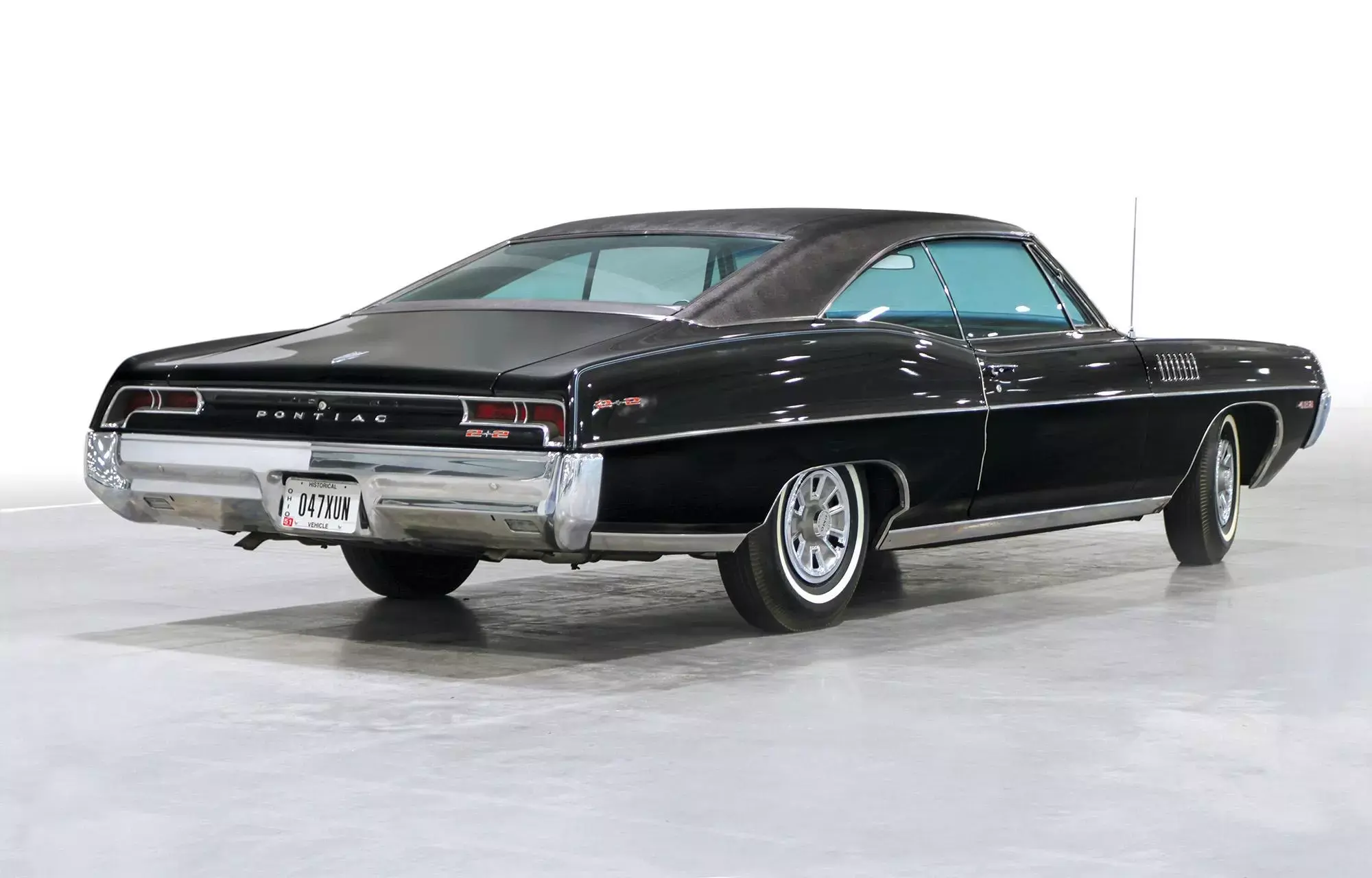
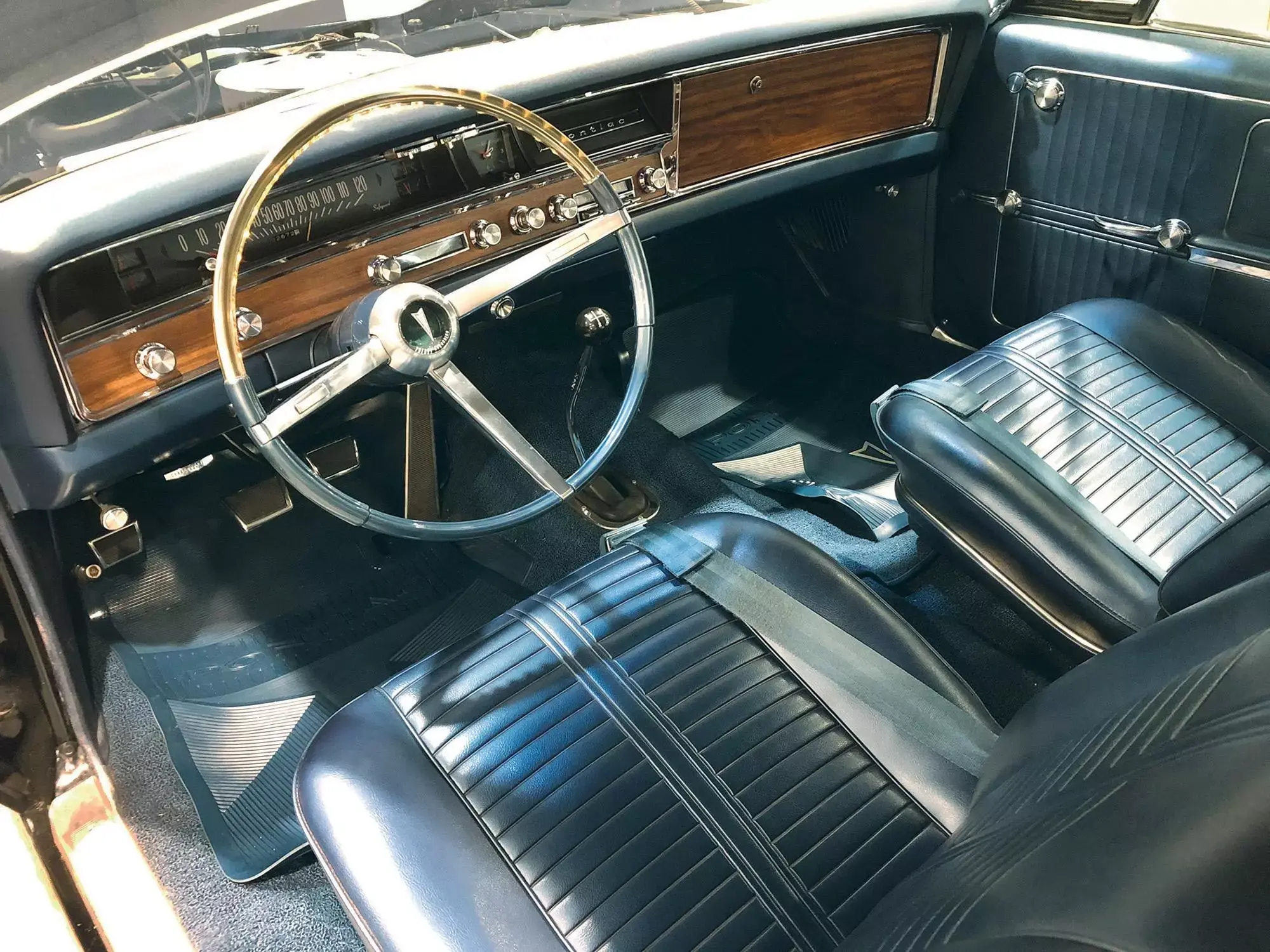
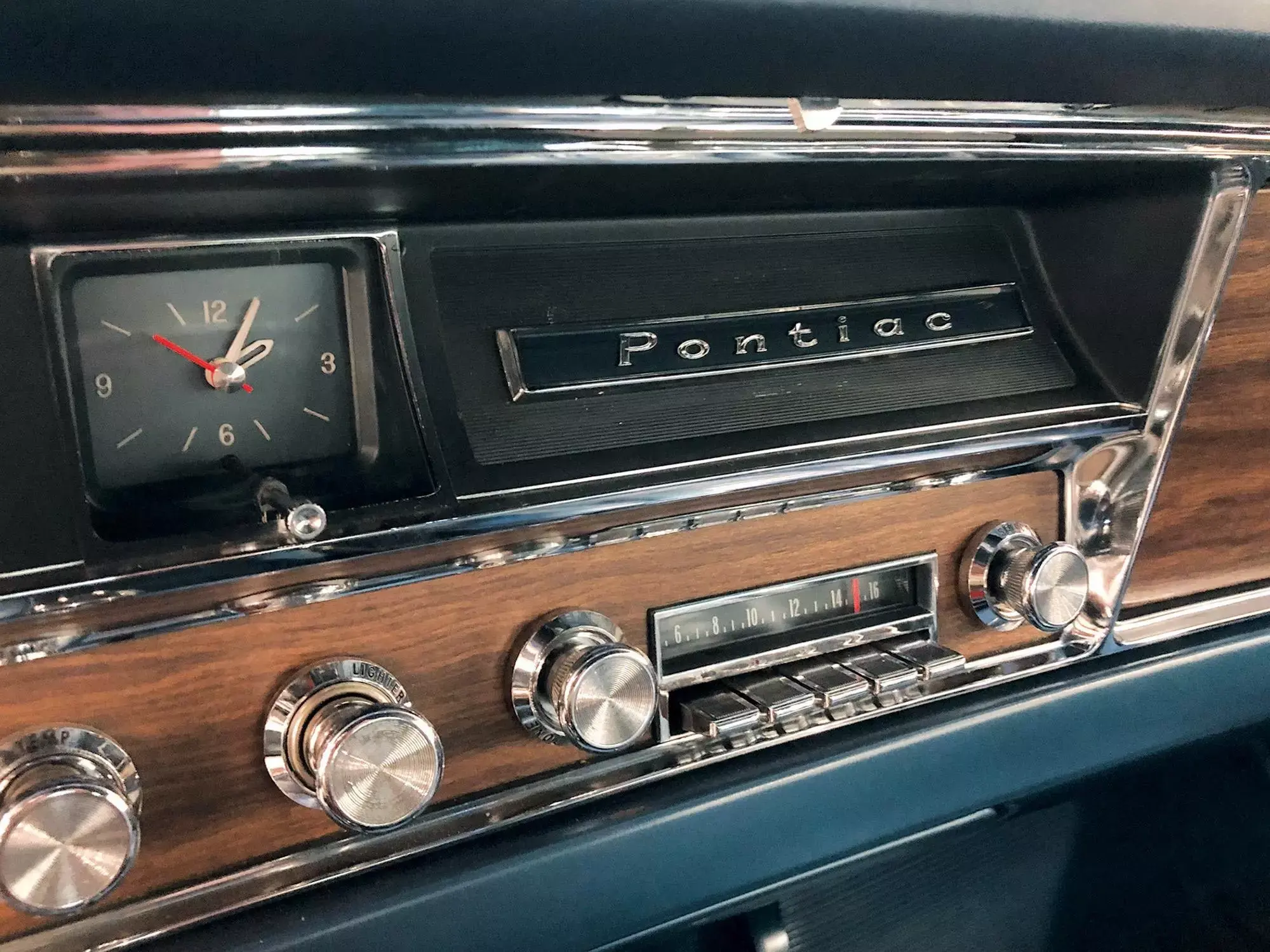
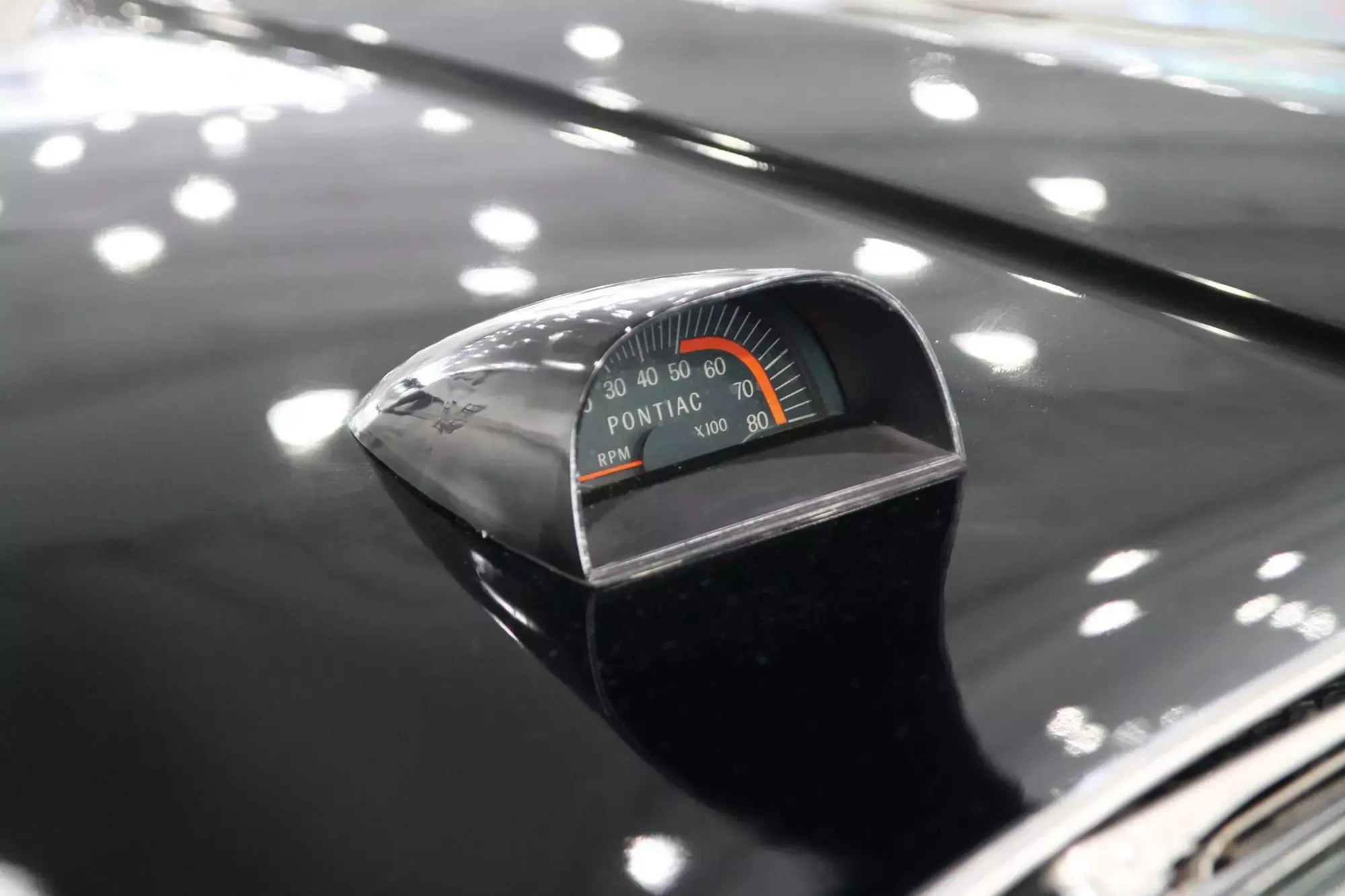
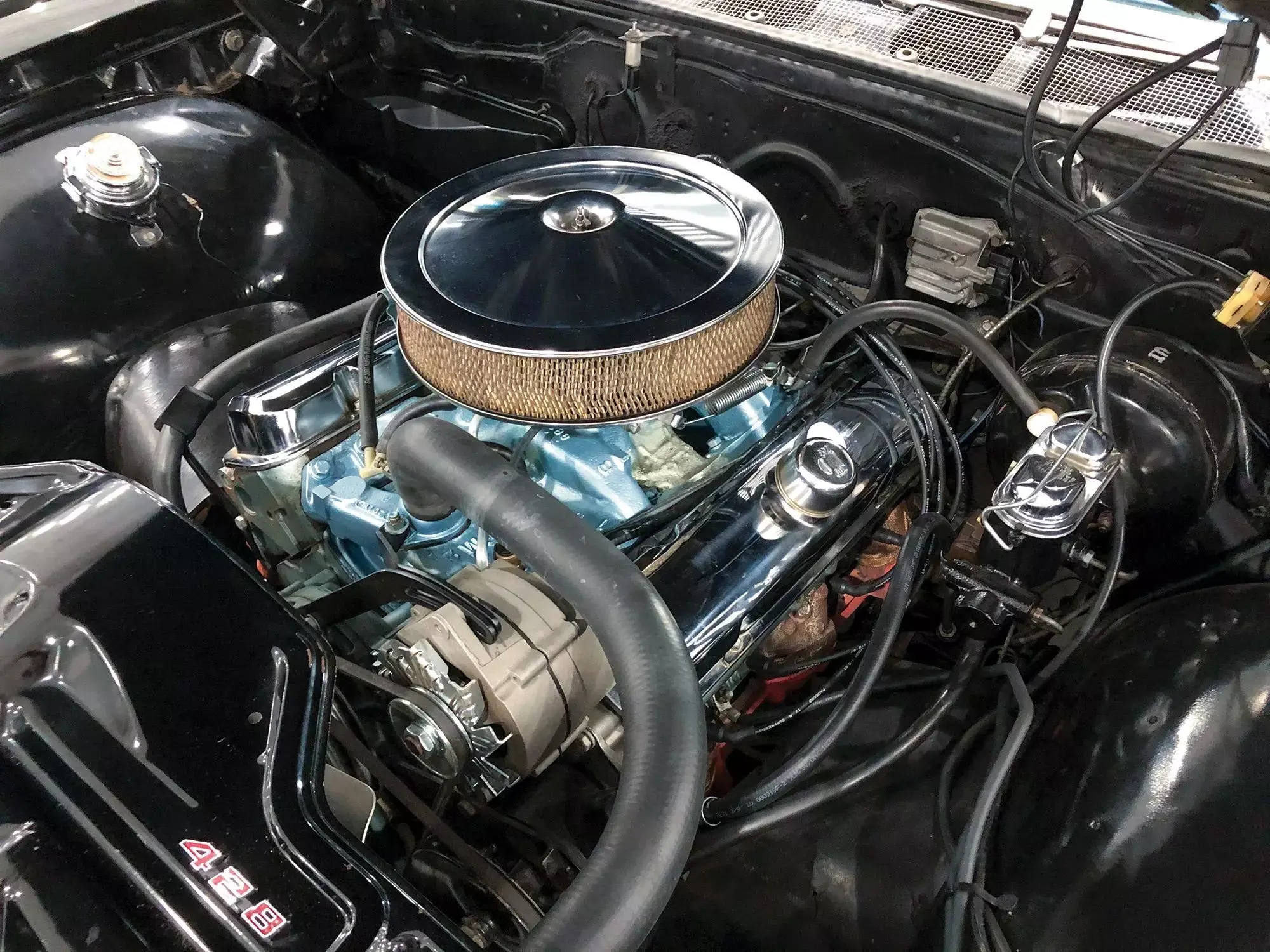
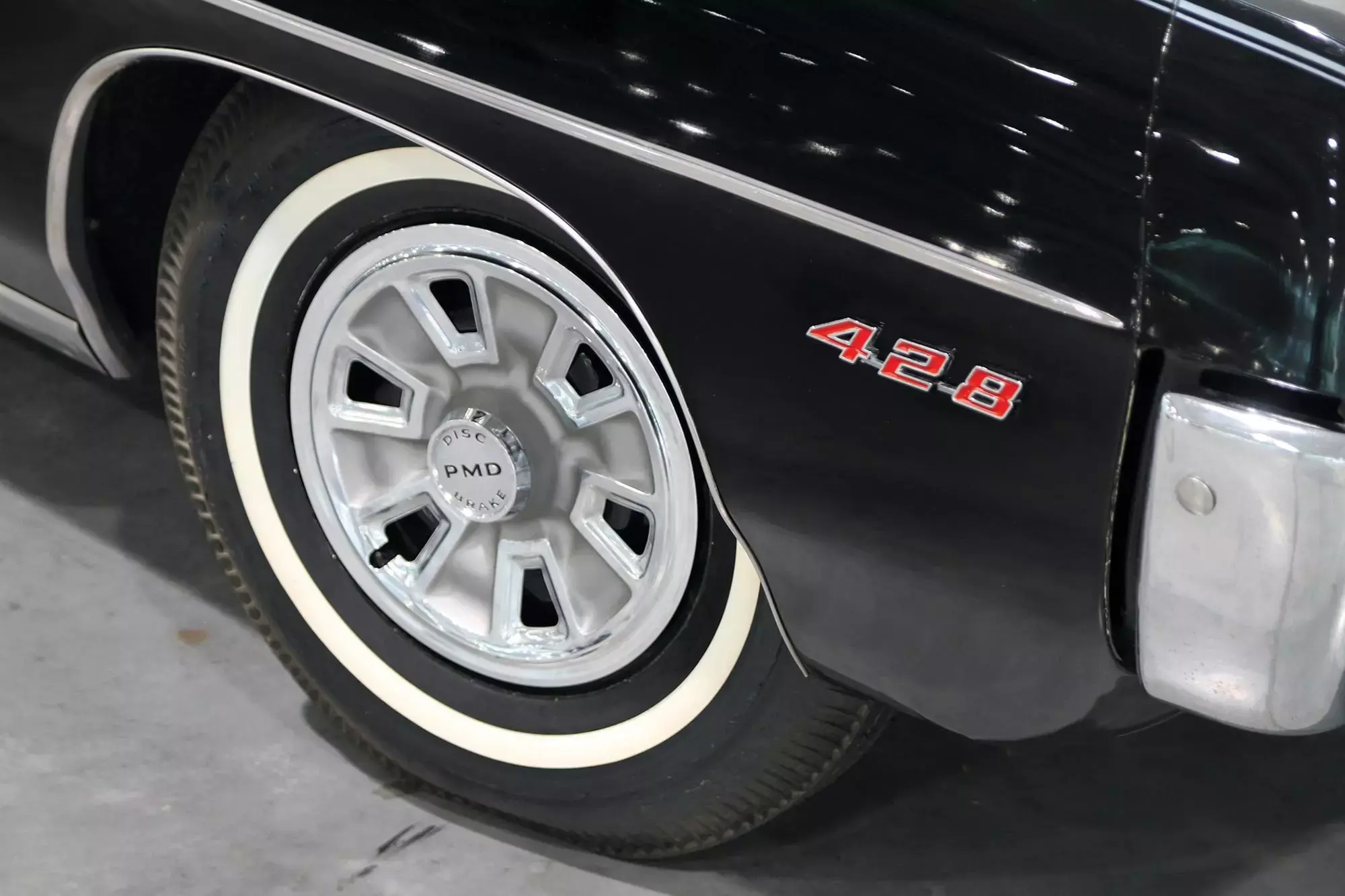
Low-mileage 428 H.O.-powered 1967 Pontiac Catalina 2+2 still gets regular exercise
Spellbinding survivor
09/15/2022

David Conwill and Matt Litwin
It's not often that a super-desirable, highly optioned vintage performance machine makes it up to the present day without having been subjected to the slings and arrows of decades of daily use and abuse. It’s even more unusual to find one that is so untouched that it can be held up as an example of exactly how the model was built. Hemmings’ own David Conwill and Matthew Litwin encountered just such a car at a recent Pontiac-Oakland Owners Club International national meet in Uncasville, Connecticut, and, like other attendees, were inspired to document it for posterity.
The Starlight Black-over-blue 1967 Catalina 2+2 being shown by Marion, Ohio, resident Paul Alexander always seemed to have a crowd gathered around it. When the Hemmings team got the opportunity to inspect the Pontiac themselves, the reason became clear. There was a full-size fastback sports coupe with fewer than 23,000 miles on its odometer, still wearing its factory-applied finishes, and with its numbers-matching 428 H.O. and Hurst-shifted four-speed intact. This beautiful bruiser had been in the care of its besotted owner for little over a year, and before that, carefully maintained by the same man who filled out the order sheet at Arrow Pontiac in St. Paul, Minnesota, on February 4, 1967.
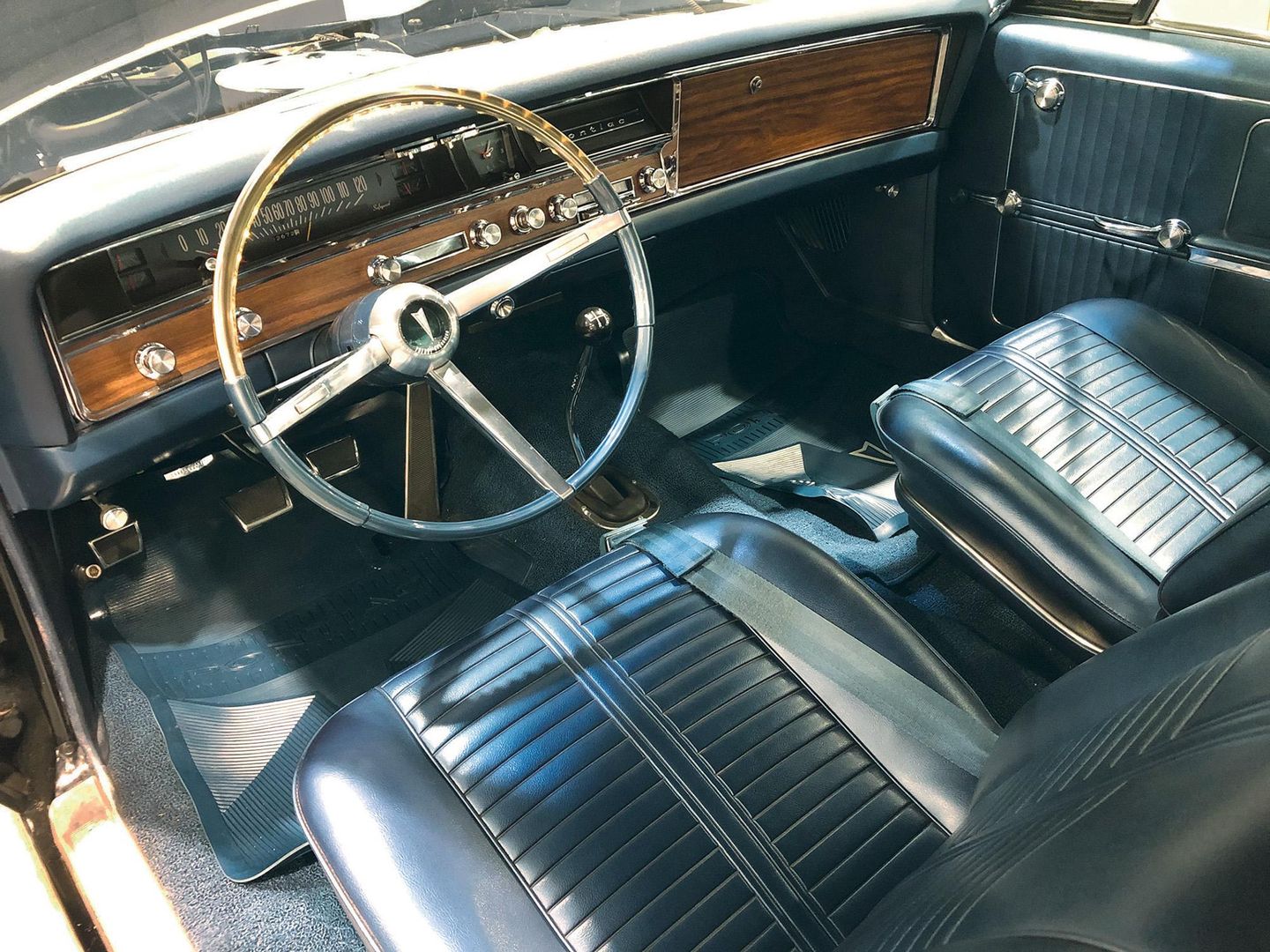
Morrokide bucket seats and a Hurst-shifted manual gave the full-size Pontiac a properly muscular feel. The deluxe pushbutton radio is one of many options.David Conwill and Matt Litwin
Paul wasn’t looking for a museum-quality 2+2 when he found this car; he already had an award-winning 1966 2+2 coupe in the garage. His interest in this now rarely seen model went back to 1966, when, as a 19-year-old, he bought one brand new. "I’d gotten a job on the railroad and was making decent money. I decided I wanted a 2+2 with three two-barrel carburetors and a four-speed," he remembers. Sadly, it wasn’t long before Paul had to do military service and was compelled to sell it. Life’s subsequent obligations — marriage, children, career — kept that favorite Pontiac at bay for many more years, until his retirement. In 2012, he purchased his second ’66 coupe, this one a burgundy, automatic Tri-Power riding on 8-lug wheels.
Paul was perfectly content with this replacement 2+2 until he got a message that would change his automotive life. "My friend Ron Berglund, president of POCI, called me in February 2020 and told me about this 1967 that was up for sale in San Diego, California. The car had a certified 22,591 miles on the odometer; I was very interested when I heard that, since there can’t be another unrestored 1967 2+2 with mileage that low. He gave me the seller’s contact information, and I began negotiating. It took three months for me to come to terms with the gentleman, and on the Tuesday that we did, I told him I would be at his home that upcoming Saturday to pick it up. I drove over 2,000 miles each way with my trailer, out and back."
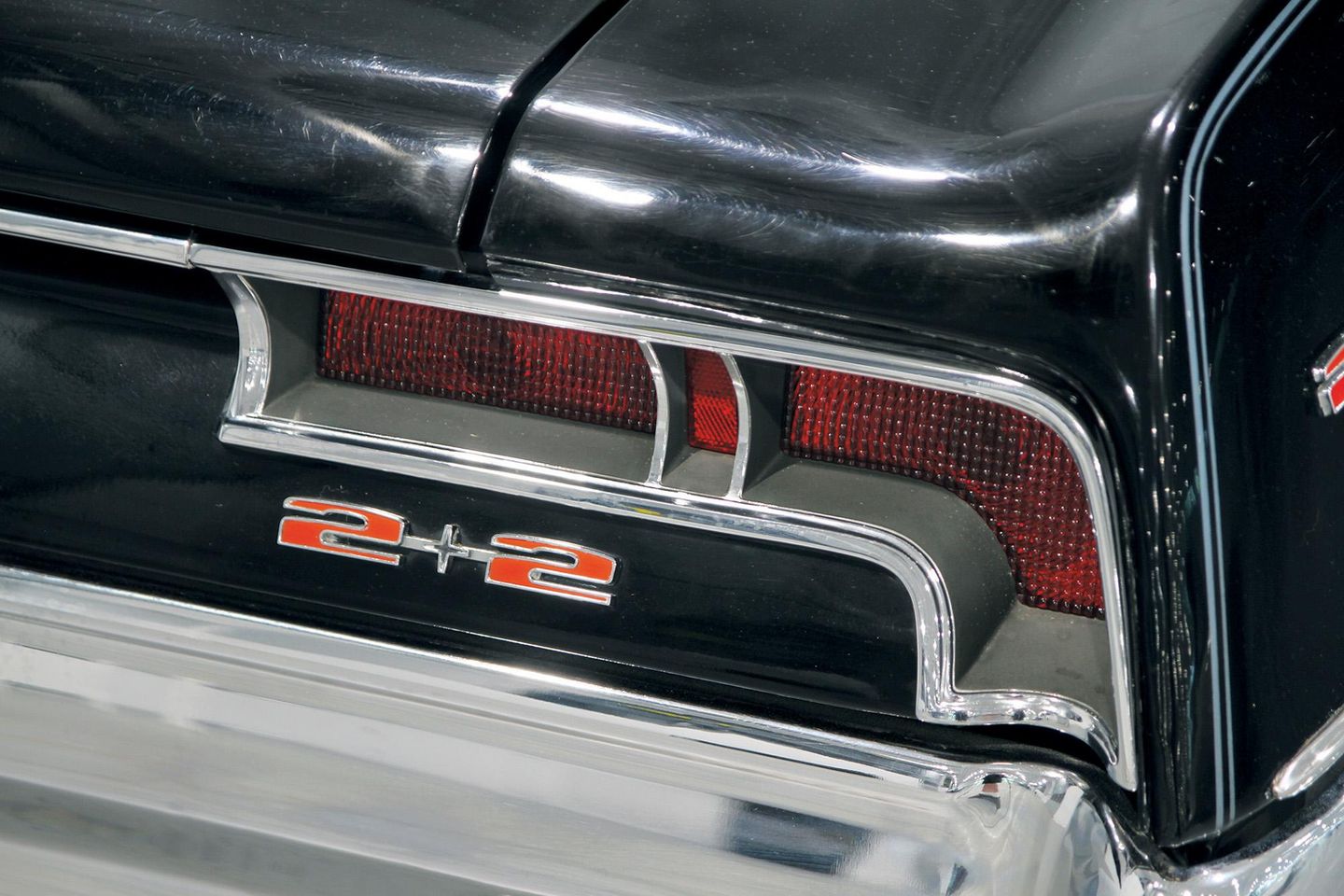
David Conwill and Matt Litwin
The car that inspired driving three-quarters of the way across America was truly special. Its fresh, long, and low lines represented a handsome evolution of the previous year’s crisp style and further emphasized the brand’s Wide Track stance. While the 2+2 had been a standalone model in 1966, it was a $420.22 option on the 1967 Catalina hardtop coupe. That sole selection represented, in 2022 dollars, a $3,730 upcharge over the $26,180 that is the rough equivalent of the original $2,951 MSRP. Selecting "W51" brought a 360- hp, 4-bbl.-carbureted 428 V-8 with dual exhausts and a floor-shifted three-speed manual, a larger-diameter front anti-sway bar, Strato bucket front seats upholstered in Morrokide, eye-catching badging, and numerous deluxe trimmings. Our feature Pontiac’s original owner didn’t stop there, adding the 376-hp H.O. V-8 ($119.43), four-speed manual ($226.44), Safe-T-Track differential ($42.13), front disc brakes ($110.59), "Ride & Handling" springs and shocks ($9.32), Wonder Touch power steering ($94.73), and a Cordova top ($105.32), among many other items that led to it nearly doubling the original MSRP.
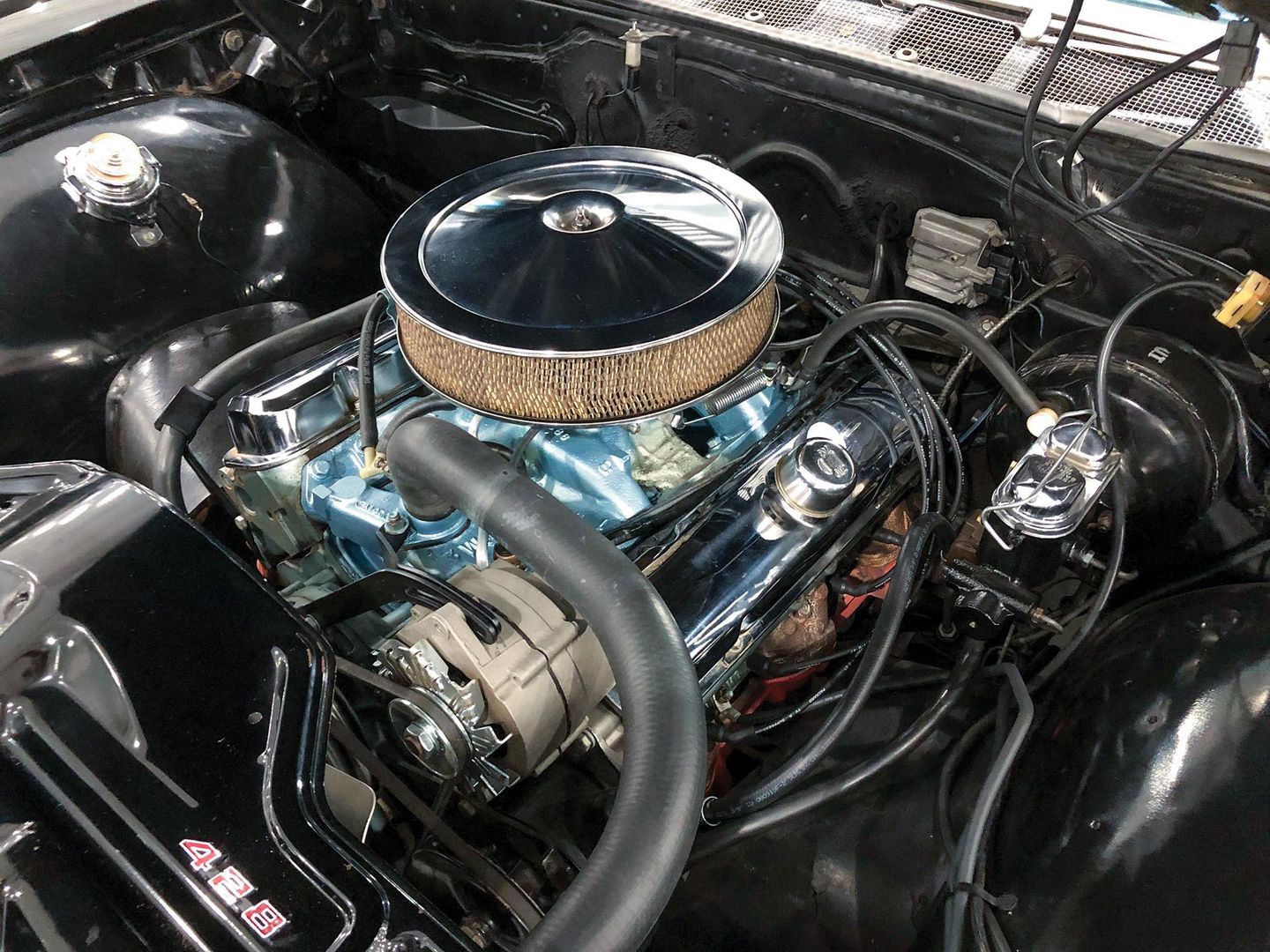
This 2+2 was optioned with the High Output 376-hp 428 backed by a four-speed; with fewer than 23,000 original miles, it’s only needed regular maintenance. David Conwill and Matt Litwin
That High Output 428 was a new offering for ’67 and was the top-spec engine available in Pontiac’s full-size line. The six-barrel Tri-Power carburetor setup that had been a trademark of this division for 10 years was no longer available, replaced by the single four-barrel Rochester Quadrajet; this setup was dubbed "Quadra-Power" in its stoutest form. Pontiac engineers did their best to make up for this corporate-decreed marketing loss by bumping their top-spec V-8’s displacement from 421 to 428 cubic inches, not coincidentally out-numbering the Mopar Hemi’s 426 and Ford’s 427 cubic inches.
It was more than that simple .030-inch increase in bore size that made the 428 H.O. special. Dressing up the engine bay were chrome-finished rocker covers, a chrome-plated oil-filler cap, and matching air cleaner housing. Under the glitter, this premium-fueled V-8 sported that 4-bbl. carburetor on an optimized intake manifold. An uprated valvetrain actuated by a unique "068" camshaft topped redesigned heads with a new combustion chamber design that — in conjunction with flat-top pistons containing valve reliefs — provided a stronger 10.75:1 compression ratio. A low-restriction air cleaner was complemented by specific long-branch exhaust manifolds leading into low-restriction dual exhausts with straight-through mufflers.
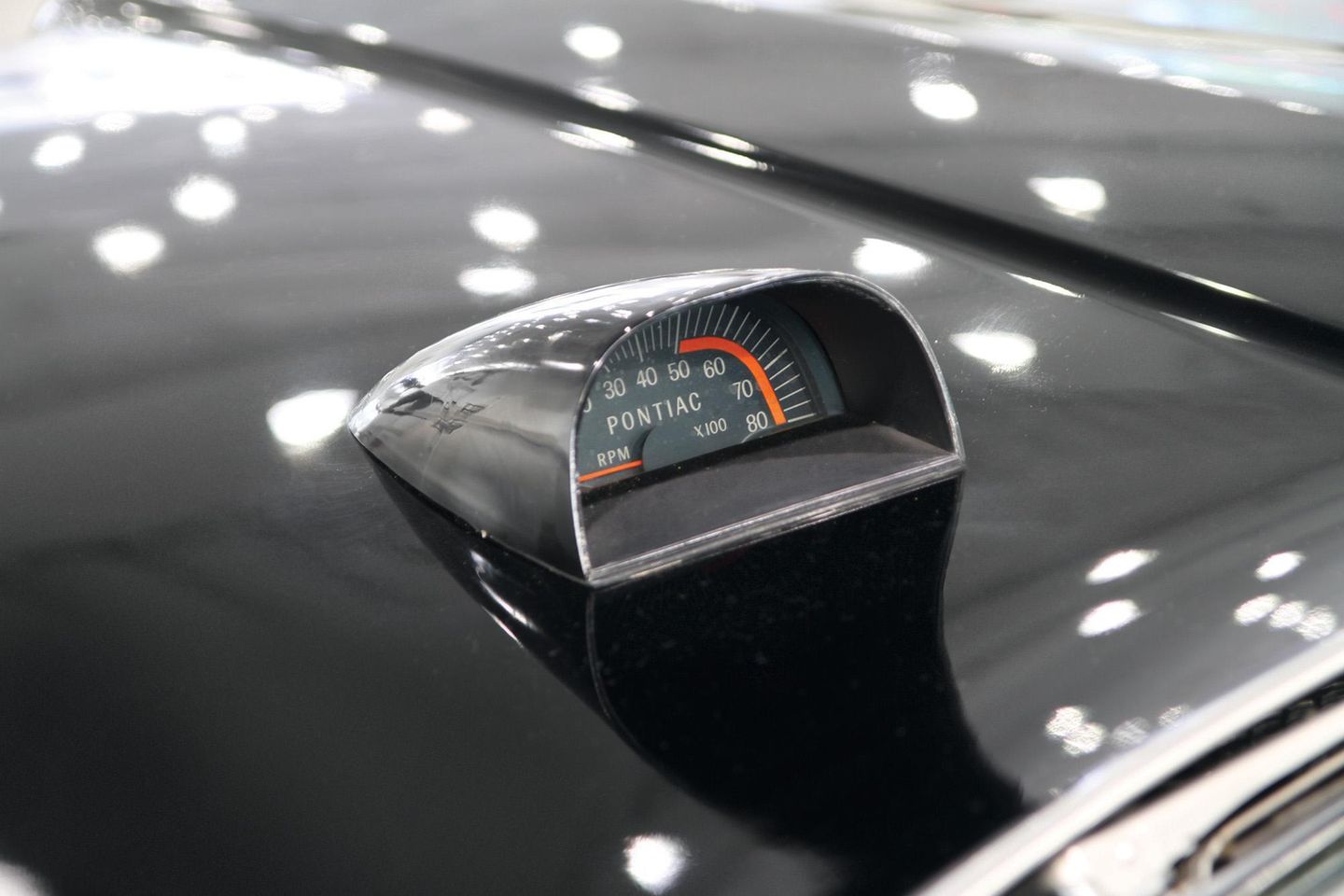
David Conwill and Matt Litwin
The result of these installations was an upward shift in the rev range and a notable change in output: rated horsepower jumped 16 to 376 at 5,100 rpm, while torque fell 10 lb-ft to 462 at 3,400 rpm. Electing to pair the Muncie M20 four-speed manual with the standard, highway friendly 3.42:1 axle ratio meant this Pontiac left the Kansas City, Kansas, plant with wide-ratio gearing.
The original owner of our feature car handled the order sheet in a conscientious manner, pairing brute power options with handling and braking upgrades that would make it thoroughly capable in any driving situation. The coil-sprung ball joint/ control arm front suspension and four-link solid-axle rear suspension received those firmer shocks and springs (90-lb-in front/127-lb-in rear), while the open differential was upgraded to a locking unit. Standard manual front drum brakes were swapped for 11.8-inch-diameter power discs backed by the new-for-1967 dual master circuit, necessitating 15-inch wheels for clearance.
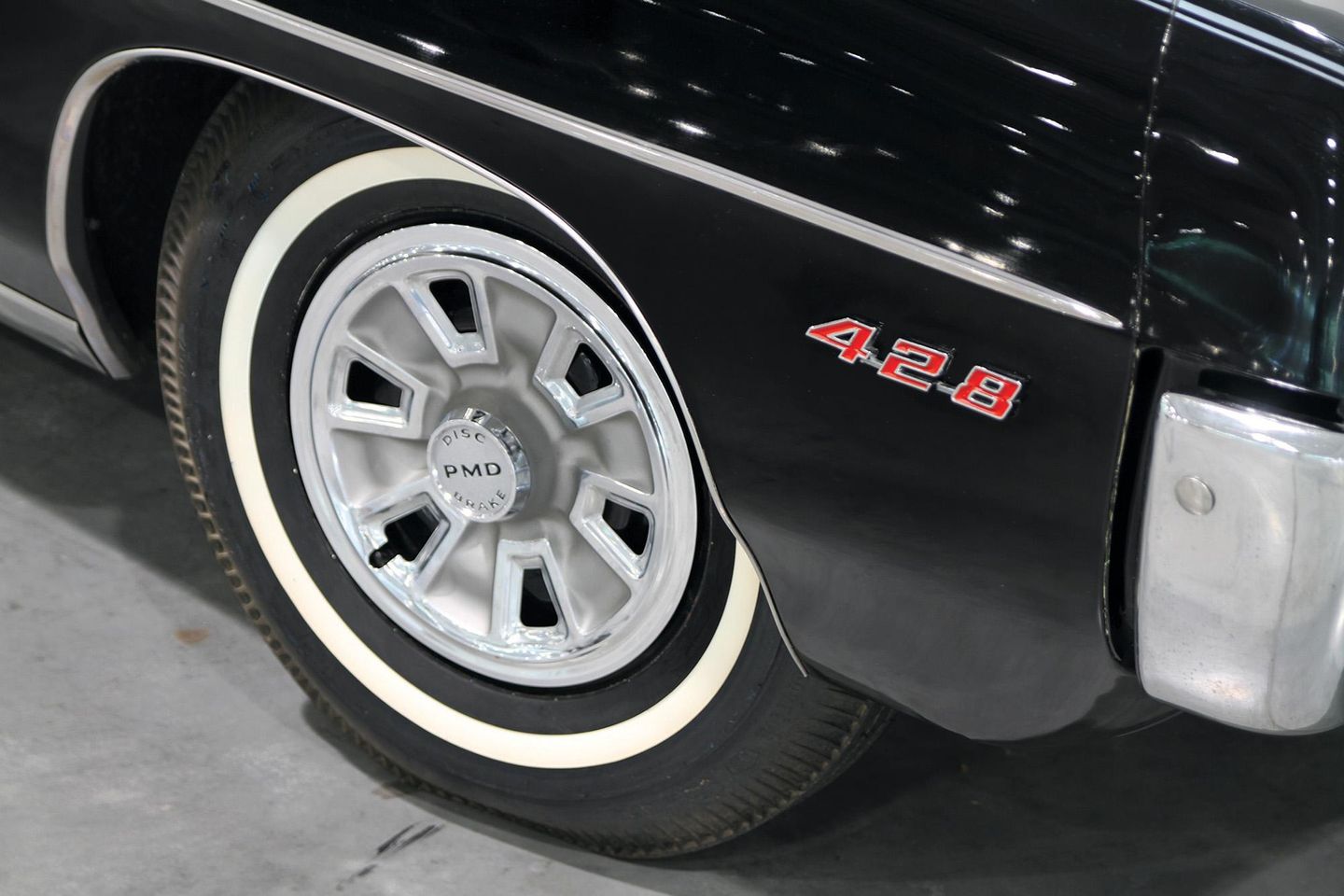
David Conwill and Matt Litwin
With this black-and-blue 2+2 set up for the road, how did it go so many decades accumulating minimal mileage? "He lived in Minneapolis, Minnesota, from when he took delivery of the car in March 1967 until he moved to San Clemente, California, in 1981," Paul tells us. "The car was shipped out there to him, and it was kept in storage. There were long periods where he had it registered with the DMV as a non-operating vehicle, so it kept its plates but it wasn’t often driven on the road." The day that Paul picked it up— commemorated with a traditional handing-of-the-keys photo, naturally— his new-to-him Pontiac was sitting on aftermarket Torq Thrust-style wheels that had been custom-machined to clear the front disc brake calipers. The original steel wheels and full wheel covers went with the car, as did boxes of take-off components and new-old-stock parts that the seller had accumulated through the years.
"I wasn’t sure I’d have enough room in my 24-foot trailer," Paul says with incredulity. "He had every spark plug that he’d ever put in that car, in a box. The original battery. Four more boxes of NOS Pontiac items that included things like rubber parts and the fork for the throw-out bearing that goes through the bellhousing; he had everything listed by category, by part number, and what the parts were for. He never told me how or why he got them; I have the feeling that, when Pontiac went out of business, he went around to dealerships and bought up anything he could get. I packed the front of that V-nose trailer with stuff he’d given me, all of it went with the car."
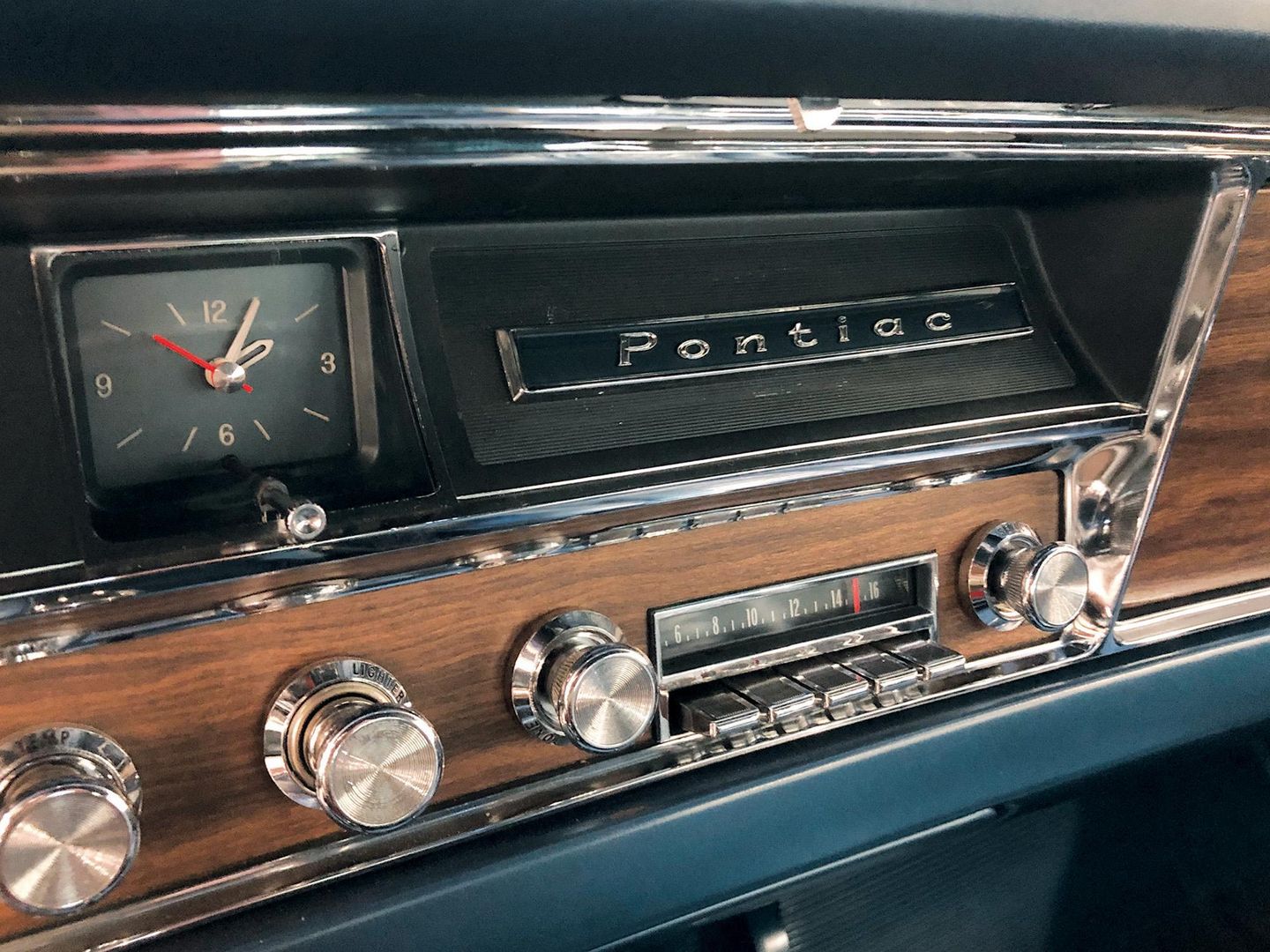
David Conwill and Matt Litwin
As you might imagine, the 1967 didn’t need much to turn it into an award-winning show queen. Its new caretaker purchased a set of correct B.F. Goodrich bias-ply tires from Coker Tire and had them mounted on the factory steel wheels. "Even with so few miles, this car takes a lot of maintenance. I did have to rebuild the calipers and fit a new power-brake master cylinder," Paul tells us. Keeping those factory-applied finishes in good shape takes still more work: he treats the vinyl top, dashboard, and interior with Armor All and tries to keep the car out of the hot sun for extended periods. The original black paint and chrome still shine thanks to regular applications of Torque Detail Mirror Shine wax spray.
Of course, the low mileage is a key factor in this car’s preservation, but Paul does start the engine regularly and periodically drives it to ensure it’s working properly. "I exercise it every once in a while to keep all the seals and bearings lubricated," he says, although he admits cringing as he does. "It just about kills me every time I put on one mile," he says with a laugh. "But it’s fun to drive. It’s a big car, but has the handling and power of a GTO. It probably rides a bit rougher than a Bonneville or Grand Prix thanks to the 2+2’s stiffer suspension, but the handling is much better. And if you step on the gas, it wants to go. It couldn’t keep up with the turbocharged cars of today, but back in that period, it would hold its own against almost anything."

David Conwill and Matt Litwin
OWNER'S VIEW
I am very proud to own this car. It’s one of the finest survivor cars in the country, and I’ve had a number of Pontiac people want to take pictures of it to see exactly what an original model looks like. This 2+2 has won the Senior Gold award at the 2022 POCI Convention, after winning Gold in the survivor class in 2021; it has scored more than 390 out of 400 points twice. Every time I take it out, it builds my ego and puts me back in my younger days. —Paul Alexander
SPECIFICATIONS
PRICE
Base price: $2,951
Options on car profiled: Catalina 2+2; Quadra-Power 428 H.O. V-8; four-speed manual transmission; Safe-T-Track differential; fi rm-ride suspension; front disc brakes; heavy-duty radiator; thermostatically controlled fan; transistorized ignition; heavy-duty battery; under-hood utility lamp; black vinyl top; deluxe wheel discs; deluxe body and roof moldings; Soft Ray tinted glass; rear-window defroster; Strato bucket seats; deluxe steering wheel; electric clock; auxiliary gauge package; pushbutton AM radio; rear speaker.
ENGINE
Block type: Pontiac 90-degree OHV V-8; cast-iron block and cylinder heads
Displacement: 428-cu in.
Bore x stroke: 4.12 x 4.00 in
Compression ratio: 10.75:1
Horsepower @ rpm: 376 @ 5,100
Torque @ rpm: 462 lb-ft @ 3,400
Valvetrain: Hydraulic lifters
Main bearings: Five
Fuel system: Rochester Quadrajet four-barrel carburetor; mechanical pump
Lubrication system: Full pressure, gear-type pump
Electrical system: 12-volt
Exhaust system: Cast-iron manifolds; dual exhausts
TRANSMISSION
Type: Muncie M20 wide-ratio four-speed manual with Hurst linkage
Ratios: 1st/2.52:1 … 2nd/1.88:1 … 3rd/1.46:1 … 4th/1.00:1 … Reverse/2.27:1
DIFFERENTIAL
Type: Semi-floating hypoid, Safe-T-Track limited-slip
Ratio: 3.42:1
STEERING
Type: Recirculating ball, power assist
Ratio: 17.5:1
Turning circle: 46.1 feet
BRAKES
Type: Hydraulic, power assist Front: 11.8-in disc with four-piston, two-piece calipers Rear: 11-in cast-iron drum
SUSPENSION
Front: Independent, upper and lower control arms, heavy-duty coil springs, heavy-duty shock absorbers, .875-inch anti-sway bar
Rear: Solid axle, upper and lower control arms, heavy-duty coil springs, heavy-duty shock absorbers
WHEELS & TIRES
Wheels: Pressed steel with full covers; Front/Rear: 15 x 6.0 in
Tires: B.F. Goodrich Rayon; Front/Rear: 8.45 x 15
PRODUCTION
Pontiac built 1,768 Catalina 2+2 two-door hardtops and convertibles for 1967.
PERFORMANCE
0-60 MPH: N/A
1/4-mile ET: N/A
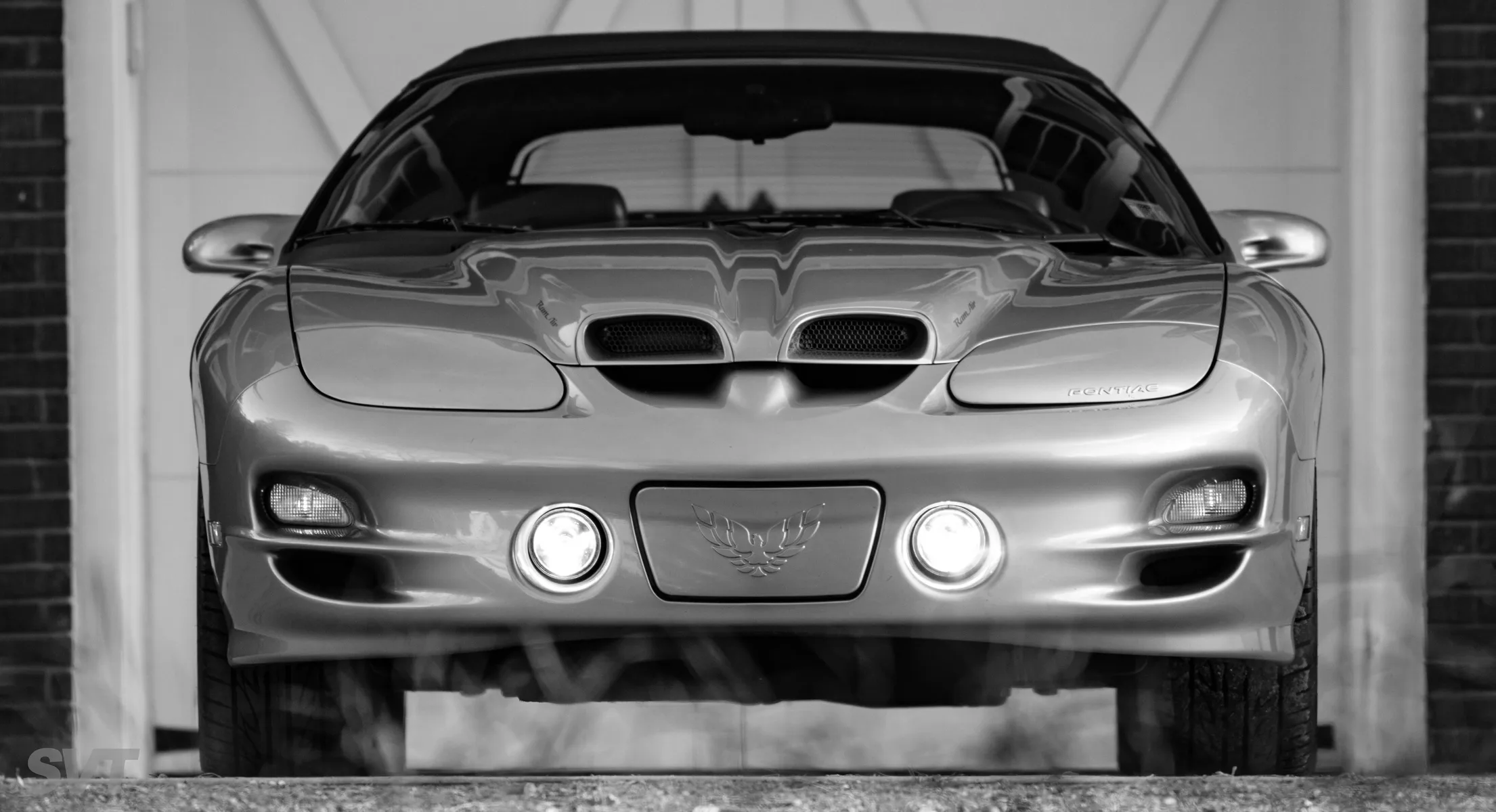
See Your Local Chapter Events
Our chapters often sponsor car shows and other events.


